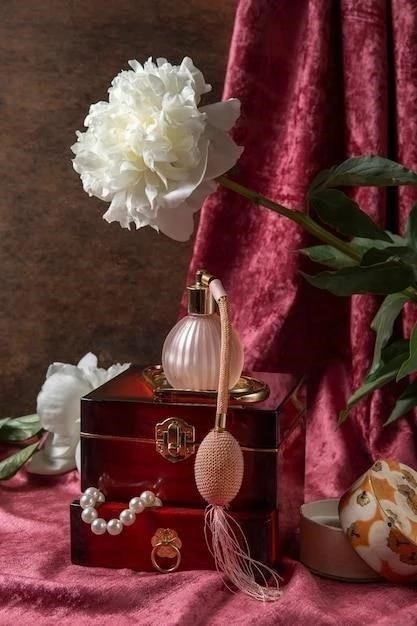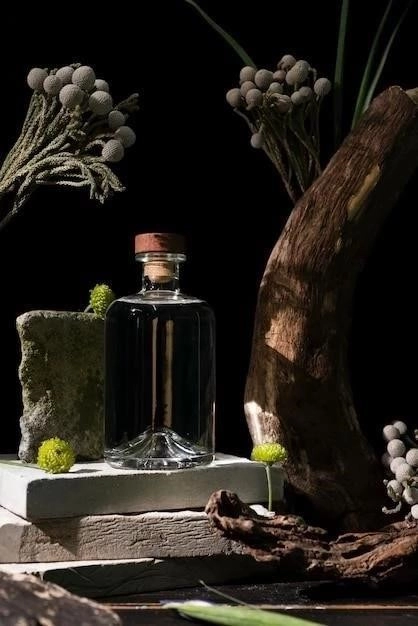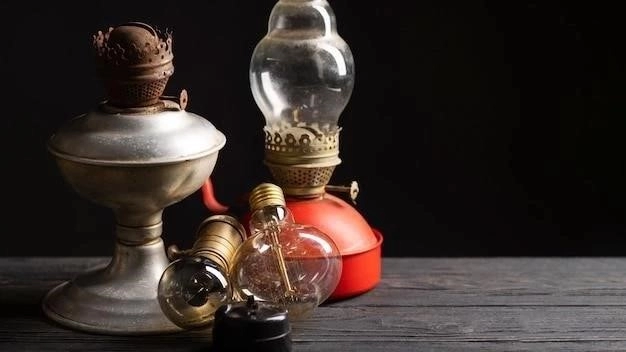The Intriguing History of Perfume: From Ancient Scents to Modern Fragrances
Perfume‚ a word derived from the Latin “per fumum‚” meaning “through smoke‚” has a rich and captivating history that spans millennia. From its ancient origins steeped in ritual and spirituality to its modern-day incarnation as a multi-billion dollar industry‚ perfume has consistently played a fascinating role in human civilization. This aromatic journey takes us through the ages‚ exploring the evolution of perfume from the earliest civilizations to the sophisticated fragrances we know today.
Ancient Origins: Scents of the Gods and Rituals
The earliest records of perfume date back approximately 4‚000 years to ancient Mesopotamia‚ where fragrant materials like resins and spices were burned as offerings to the gods. This practice of using scent as a form of communication with the divine was also prevalent in ancient Egypt‚ where perfume played an integral role in religious ceremonies and burial rituals. The Egyptians were pioneers in the art of perfumery‚ developing sophisticated methods for extracting and blending essential oils from flowers‚ herbs‚ and resins. These fragrant concoctions were not only used for religious purposes but were also highly prized as a luxury item among the elite.
In ancient China‚ incense played a significant role in religious ceremonies and was believed to possess purifying and medicinal properties. The Chinese also developed early forms of solid perfumes‚ often crafted into intricate shapes and designs.
Key Developments in the Ancient World:
- Mesopotamia (c. 4000 BCE): Earliest evidence of perfume production found in cuneiform tablets.
- Egypt (c. 3000 BCE): Egyptians develop advanced perfumery techniques‚ using scents in religious ceremonies and daily life. The discovery of the worlds oldest perfume factory in Pyrgos‚ Cyprus‚ dating back to 1850 BCE‚ further underscores the significance of perfume in ancient Egyptian culture.
- Indus Valley Civilization (c. 3300-1300 BCE): Archaeological evidence suggests the use of fragrant materials like sandalwood and incense.

Classical Antiquity: Perfume in Greece and Rome
The ancient Greeks further refined the art of perfumery‚ developing new extraction methods and experimenting with a wider variety of fragrant ingredients. Perfume became an integral part of Greek culture‚ used in religious rituals‚ social gatherings‚ and even in medicine. The Greeks believed that certain scents possessed therapeutic properties and incorporated them into their healing practices.
The Romans‚ known for their love of luxury and extravagance‚ embraced perfume with great enthusiasm. Roman perfumers created a wide array of scents‚ ranging from delicate florals to rich‚ spicy aromas. Perfume was used lavishly in Roman society‚ not only for personal adornment but also to scent their homes‚ baths‚ and even their chariots.
Key Developments in Classical Antiquity:
- Greece (c. 8th Century BCE): Greeks adopt and refine Egyptian perfumery techniques‚ incorporating scents into daily life and religious practices.
- Rome (c. 1st Century BCE ⎯ 5th Century CE): Roman Empire becomes a major center for perfume production and trade. Perfume use becomes widespread‚ even used to scent public baths and events.
The Middle Ages: Perfume in the East and the West
With the fall of the Roman Empire‚ Europe entered the Middle Ages‚ a period marked by significant cultural and societal shifts. Perfume‚ once a symbol of Roman opulence‚ fell out of favor in the West‚ largely due to the influence of the early Christian Church‚ which viewed excessive luxury and vanity with suspicion.
However‚ the art of perfumery continued to flourish in the East‚ particularly in the Islamic world. Arab and Persian alchemists made significant advancements in distillation techniques‚ leading to the discovery of new fragrant materials and the creation of more complex and sophisticated perfumes. The rise of the Arab Empire facilitated the trade of perfume ingredients and knowledge across vast distances‚ spreading the influence of Eastern perfumery to other parts of the world.
Key Developments in the Middle Ages:
- Islamic Golden Age (c. 8th Century ⎯ 13th Century): Arab and Persian scholars make significant contributions to chemistry and distillation‚ leading to innovations in perfumery. Rosewater and musk become highly prized ingredients.
- Crusades (1095-1291): European exposure to Eastern fragrances and ingredients during the Crusades sparks a renewed interest in perfume in the West.

The Renaissance and Beyond: The Rebirth of Perfume in Europe
The Renaissance marked a period of great cultural and artistic rebirth in Europe. With the rediscovery of classical knowledge and a renewed emphasis on personal adornment‚ perfume once again gained popularity. Italy emerged as a center for perfume production‚ with cities like Venice and Florence renowned for their exquisite fragrances.
The 16th and 17th centuries saw the rise of powerful royal courts in France‚ where perfume became an indispensable part of courtly life. King Louis XIV of France‚ known as the “Sun King‚” was a renowned perfume aficionado and his court at Versailles became synonymous with luxury and extravagance‚ including the lavish use of perfume. French perfumers excelled in creating sophisticated scents‚ often using ingredients like bergamot‚ jasmine‚ and rose.
Key Developments in the Renaissance and Beyond:
- Renaissance (c. 14th -17th Century): Perfume regains popularity in Europe‚ particularly in Italy and France. New ingredients are introduced from the East‚ expanding the perfumers palette.
- 18th Century: The invention of Eau de Cologne in Germany offers a lighter alternative to traditional perfumes.
- 19th Century: Advances in chemistry lead to the creation of synthetic fragrance molecules‚ expanding the possibilities for perfume creation.
The Modern Era: Perfume for the Masses
The 20th century witnessed a revolution in perfumery. Advances in chemistry led to the creation of synthetic fragrance molecules‚ which not only provided new and exciting olfactory possibilities but also made perfume production more affordable. This paved the way for the mass-market appeal of perfume‚ making it accessible to a wider audience.
The rise of designer perfumes in the latter half of the 20th century further democratized perfume‚ making it an integral part of fashion and personal branding. Today‚ the perfume industry is a multi-billion dollar global market‚ with a dizzying array of fragrances to choose from‚ each crafted to evoke a specific mood‚ memory‚ or aspiration.
Key Developments in the Modern Era:
- Early 20th Century: The creation of iconic perfumes like Chanel No. 5 (1921) revolutionizes the industry‚ introducing abstract and innovative fragrance compositions.
- Mid-20th Century: The rise of designer perfumes makes fragrance more accessible and linked to fashion and lifestyle.
- Late 20th ⎯ 21st Century: The perfume industry experiences a surge in niche and artisanal perfumery‚ offering unique and complex scents. Sustainability and ethical sourcing of ingredients become increasingly important.
Conclusion: The Enduring Allure of Perfume
From the ancient rituals of burning incense to the modern-day quest for the perfect signature scent‚ the history of perfume is a testament to humanitys enduring fascination with fragrance. Perfume has the remarkable ability to evoke powerful emotions‚ transport us through time and space‚ and express our individuality. As we move further into the 21st century‚ the world of perfume continues to evolve‚ driven by innovation‚ creativity‚ and a desire to capture the essence of human experience in a bottle.

The Future of Fragrance: Innovation‚ Sustainability‚ and Personalization
The trajectory of perfumes evolution points towards a future shaped by three key forces: relentless innovation in fragrance creation‚ an increasing emphasis on sustainability and ethical sourcing‚ and a growing demand for personalized scent experiences.
1. Pushing the Boundaries of Scent:
Perfumers are constantly exploring new frontiers in scent creation‚ experimenting with novel ingredients‚ advanced technologies‚ and unconventional approaches.
- Biotechnology: The use of biotechnology is opening up exciting possibilities for developing new fragrance molecules. Researchers are exploring methods to extract scents from rare and endangered flowers without harming the plants‚ ensuring the preservation of biodiversity.
- AI and Machine Learning: Artificial intelligence and machine learning are being utilized to analyze vast databases of fragrance formulas and consumer preferences. This data-driven approach is enabling perfumers to create highly targeted scents tailored to specific demographics and markets.
- Sensory Experiences: Perfume is no longer limited to the traditional spray bottle; We are seeing the emergence of innovative fragrance delivery systems‚ such as scented jewelry‚ clothing infused with microcapsules that release scent upon touch‚ and even virtual reality experiences that incorporate scent.
2. Ethical and Sustainable Practices:
Consumers are becoming increasingly conscious of the environmental and social impact of their purchases‚ and the perfume industry is responding with a greater commitment to sustainability and ethical sourcing.
- Transparency and Traceability: There is a growing demand for transparency in fragrance supply chains. Perfume houses are increasingly disclosing the origins of their ingredients‚ ensuring that they are sourced responsibly and ethically.
- Natural and Organic Ingredients: The use of natural and organic ingredients is on the rise‚ as consumers seek out fragrances that are gentle on their skin and the environment.
- Eco-Friendly Packaging: Perfume brands are adopting eco-friendly packaging practices‚ such as using recycled materials‚ reducing packaging waste‚ and opting for refillable bottles.
3. The Rise of Bespoke Scents:
The desire for individuality and self-expression is fueling a trend towards personalized fragrances. Consumers are no longer content with mass-produced scents and are seeking out unique fragrances that reflect their personality and style.
- Custom Blending: Many perfume houses now offer custom blending services‚ allowing customers to work with a perfumer to create a one-of-a-kind scent tailored to their preferences.
- DNA-Based Perfumes: Emerging companies are even exploring the creation of DNA-based perfumes‚ using genetic information to develop scents that are supposedly uniquely suited to an individuals body chemistry.
- Subscription Boxes: Fragrance subscription boxes are gaining popularity‚ offering a curated selection of niche and artisanal perfumes‚ allowing consumers to discover new and unique scents tailored to their evolving tastes.
Conclusion: A Fragrant Future
The future of perfume promises to be as captivating and multifaceted as its history. Driven by innovation‚ sustainability‚ and personalization‚ the fragrance industry is poised to create scents that are not only alluring but also ethically produced‚ environmentally responsible‚ and deeply resonant with individual identities.
The Olfactory Landscape of Tomorrow: Trends Shaping the Future of Fragrance
While the historical tapestry of perfume is undeniably rich and captivating‚ the true excitement lies in understanding how these ancient practices and modern innovations are coalescing to shape the future of fragrance. Here‚ we delve into the emerging trends poised to define the olfactory landscape of tomorrow:
1. Beyond the Bottle: Exploring New Dimensions of Scent Delivery
The traditional perfume bottle‚ while iconic‚ is being challenged by a new wave of fragrance delivery systems that prioritize sustainability‚ personalization‚ and multi-sensory experiences:
- Solid Perfumes: These eco-friendly alternatives to alcohol-based perfumes utilize waxes and butters to hold and diffuse fragrance‚ eliminating the need for plastic or glass packaging.
- Microencapsulation Technology: This innovative approach encapsulates fragrance molecules within tiny spheres that release scent upon contact or changes in temperature‚ allowing for longer-lasting and more controlled fragrance experiences. This technology is being integrated into textiles‚ cosmetics‚ and even architectural materials‚ blurring the lines between our physical spaces and our olfactory perceptions.
- Tech-Enabled Fragrance Devices: From smart diffusers that personalize scent based on mood and environment to wearable devices that release customized fragrance profiles‚ technology is playing an increasingly important role in how we experience and interact with scent.
2. The Rise of “Functional Fragrances”: Scent as a Tool for Wellbeing
As scientific understanding of the link between scent and emotion deepens‚ a new category of “functional fragrances” is emerging:
- Aromatherapy-Inspired Blends: Fragrances that incorporate essential oils and botanical extracts known for their calming‚ energizing‚ or mood-boosting properties are gaining popularity as consumers seek out holistic approaches to wellbeing.
- Neurocosmetics: This cutting-edge field explores the use of fragrance molecules to interact with the nervous system‚ potentially offering benefits such as stress reduction‚ sleep enhancement‚ and even cognitive enhancement.
- Personalized Scent Profiles for Health: Imagine a future where wearable sensors analyze your body chemistry and release tailored fragrance blends designed to optimize your mood‚ focus‚ or even manage certain health conditions. This level of personalization‚ while still in its infancy‚ represents an exciting frontier in the intersection of fragrance and technology.
3. A Renewed Emphasis on Transparency and Ethical Sourcing
Consumers are demanding greater transparency and accountability from the brands they support‚ and the fragrance industry is responding with a renewed focus on ethical and sustainable practices:
- Blockchain Technology for Supply Chain Transparency: Blockchain technology is being implemented to track the journey of fragrance ingredients from their source to the final product‚ ensuring fair labor practices and preventing counterfeiting.
- Regenerative Agriculture: Perfume houses are increasingly partnering with farmers who employ regenerative agricultural practices‚ promoting soil health‚ biodiversity‚ and carbon sequestration.
- Upcycled Ingredients: There is a growing movement towards utilizing upcycled ingredients in perfume creation—think discarded flower petals from weddings or fruit rinds from juice production—reducing waste and promoting a more circular economy.
Conclusion: An Olfactory Renaissance
The future of fragrance is brimming with possibility. As technology advances‚ our understanding of the profound connection between scent and human experience deepens‚ and the demand for sustainability and ethical practices intensifies‚ we can expect to see a renaissance in the world of perfume—one characterized by innovation‚ responsibility‚ and a profound appreciation for the power of scent to enhance our lives.










